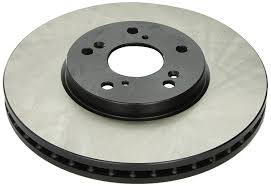Everything you need to know about brakes:
New front brake pad friction material is usually 10mm thick and will last, conservatively, around 30,000 miles. The last 1mm would be the bare minimum you should leave before being in danger of the metal backing plate coming in contact with the rotor. Most auto shops will tell you that at 3 millimeters your brake pads should be changed. We believe that at 3 millimeters, you still have 20% of your brake pad material left - approximately 6,000 miles. For most cars, that's enough mileage for a full oil change before needing the pads to be replaced. For the average driver, that's 6 months.
Rear brake pads are almost the same. They usually come 8mm thick and will last, conservatively, 60,000 miles. So if the rear brakes are at 3mm, you still have 15,000 miles left - for most people that's more than a year!
When an auto shop tells you your brakes are at 3mm and are dangerously thin, you'll know better.
Rear brake pads are almost the same. They usually come 8mm thick and will last, conservatively, 60,000 miles. So if the rear brakes are at 3mm, you still have 15,000 miles left - for most people that's more than a year!
When an auto shop tells you your brakes are at 3mm and are dangerously thin, you'll know better.
The brake rotor is a metal disk that the brake pad friction material is in contact with at all times. When your foot is off the brake, the rotor spins freely with the pad gliding over the surface. Once you start pushing on the brake pedal, the brake caliper clamps the two brake pads together sandwiching the rotor in between. The brake pads are trying to stop the rotor from turning and this is what slows and eventually stops your car. The pads stopping the rotor creates a lot of heat from the friction between the two and that heat must be dissipated otherwise the brake rotor would overheat and warp. The rotor is made of enough metal to be able to dissipate that heat under most circumstances. So, what does resurfacing the rotor do?



